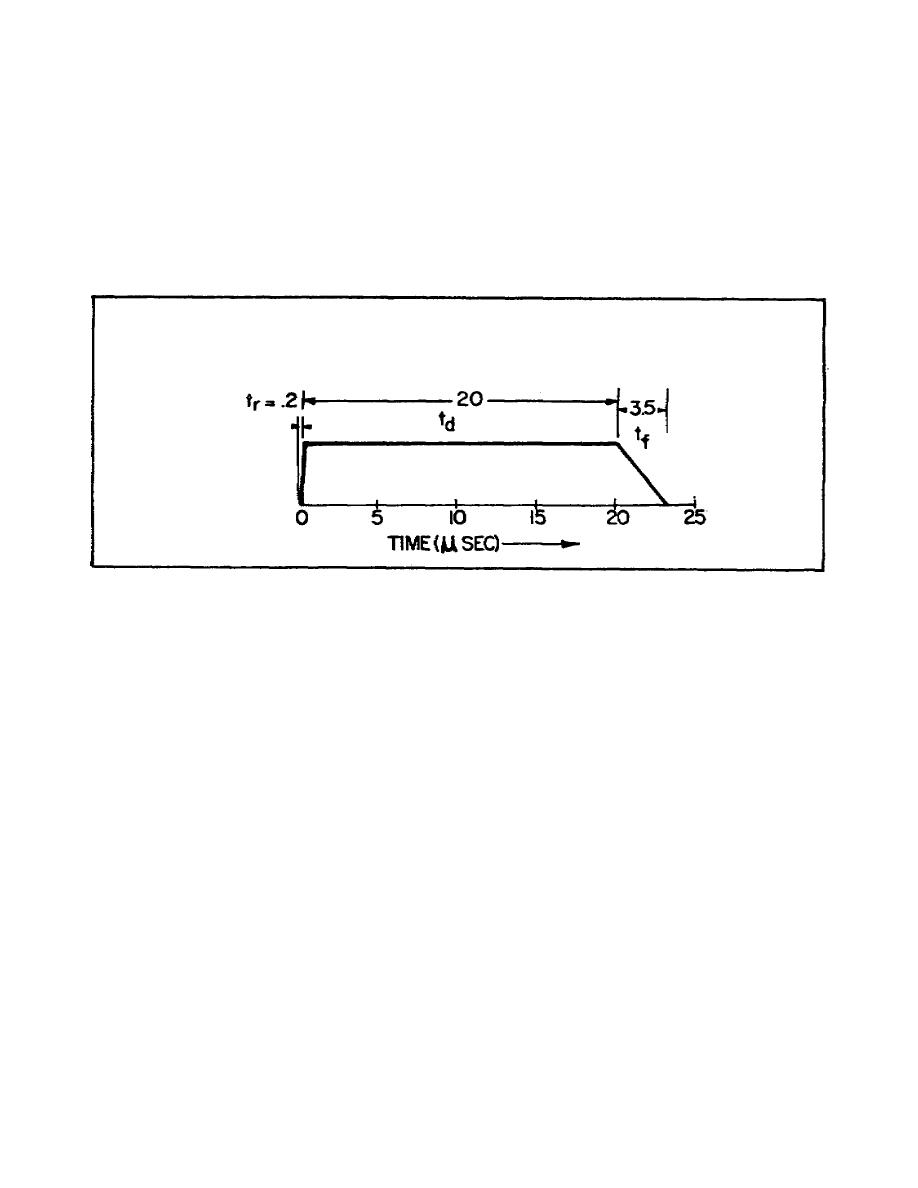
circuit. Whether a time constant is long, short, or medium, however,
depends upon the reference periods. The rise time, duration time,
and decay time (Figure 22) of the input pulse determine the reference
periods. If a time constant is less than oneseventh the time of the
reference period, the time constant is considered to be short. If
the time constant is greater than 7 times the time of the reference
period, the time constant is considered to be long. If the time
constant is greater than oneseventh but less than 7 times that of
the reference period, the time constant is considered to be medium.
Figure 22. Pulse with finite rise and decay times
b. For example, if the pulse shown in Figure 22 is applied to a
series RC or RL circuit having a time constant of 1.5 usec, the
circuit is considered to have a longtime constant in relation to the
rise time of the pulse, a shorttime constant in relation to duration
time of the pulse, and mediumtime constant in relation to the
pulse's decay time.
16.
EFFECT OF TIME CONSTANT ON A SQUARE WAVE.
a. General. There are two sources of output voltage available
from either an RC or an RL circuit (Figure 23). When taken across
the resistor, the output voltage is proportional to the current
flowing in the circuit; when taken across the capacitor, the output
voltage is proportional to the charge on the capacitor, and when
taken across the inductor, the output voltage is proportional to the
rate of change of current.
49


 Previous Page
Previous Page
